In response to the renewed interest in the 1986 Chernobyl Nuclear disaster due to the unfolding events at the Fukushima Reactor, Japan and a global re-evaluation of nuclear power as a viable power source I have re-edited my photoshoot from Pripyat (Pripiat) & Chernobyl in 2007 adding a further ten previously unseen images along with captions, maps and satellites images which follow below.

Chernobyl Disaster Radiation Map Showing present Day Exclusion Zone straddling Ukraine and Belarus (red outline at top)

Abandoned Ghost Town of Pripyat (Pripiat) 1km from the reactor note overgrown trees and the yellow ferris when at Top Left

Reactors One to Four at the Chernobyl Nuclear Power Plant. Number four at left was the reactor which exploded seen with the pale grey sarcophagus roof.
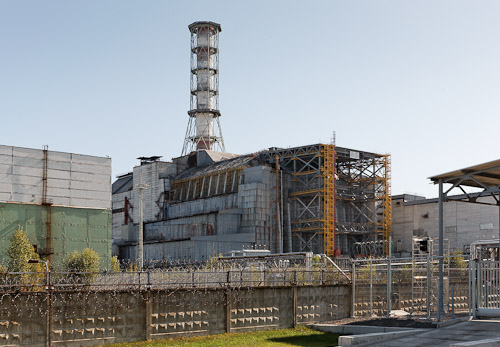
Reactor number 4 in 2007: the yellow buttress is due to subsistence of the sarcophagus structure they are holding up. There were plans to cover the entire building with yet another structure to prevent radiation leakage. Photo © Quintin Lake
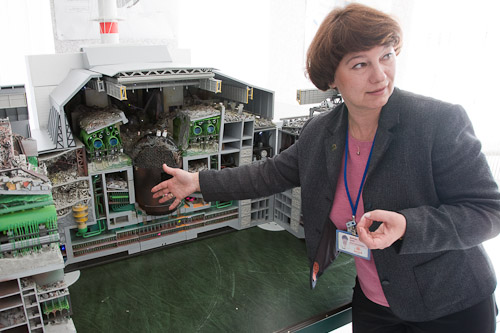
A Ukranian official indicates the fuel rods on a model of Chernobyl Reactor #4 that suffered a catastrophic explosion in 1986. Photo © Quintin Lake

Reactor number 5, which was under construction during the time of the explosion. The cranes date from 1986 when they were abandoned. Photo © Quintin Lake

A dry fuel storage facility built in 1999 but later found to be unsuitable for some of the Chernobyl fuel assemblies because they had cracked, soaked up water and changed shape. The facility now stands idle. Photo © Quintin Lake
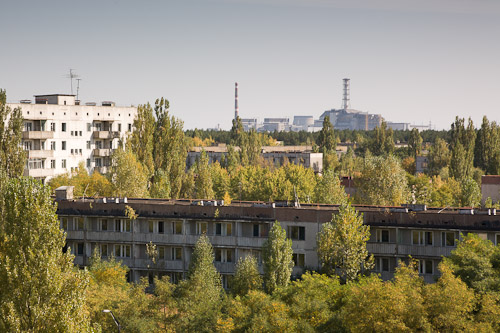
Overgrown abandoned housing in Pripyat ghost town with Reactor #4 Visible in the distance. Photo © Quintin Lake

Concrete entrance sign to Pripyat. Now a memorial, it is surrounded by a steel chain and plastic flowers. Photo © Quintin Lake

Lobby of Hotel Polissia. The checkin desk is in the background. Marble wall cladding has been removed by looters. Photo © Quintin Lake

Palace of Culture, central square and apartment blocks viewed from the terrace of hotel Polissia. Photo © Quintin Lake

A silver birch tree grows through the floor on the terrace of Hotel Polissia. The hammer and sickle is visible atop the distant apartments. Photo © Quintin Lake

Looted department store next to central square. The floor is covered with decayed ceiling tiles and strip lights. Photo © Quintin Lake
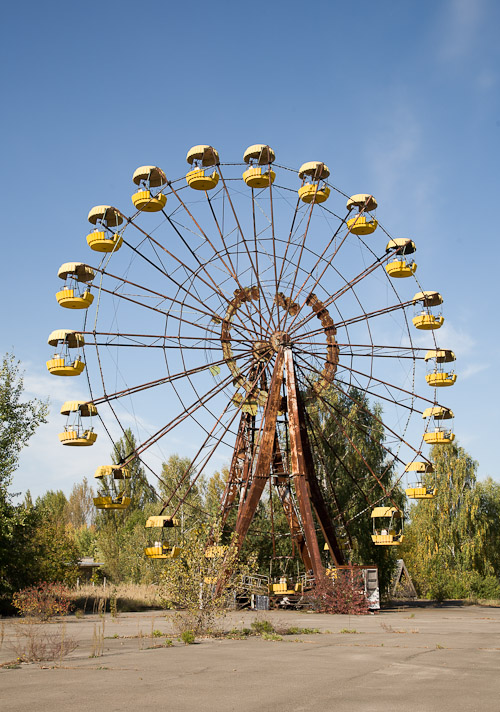
Abandoned and never used Ferris wheel, Pripyat. The pleasure park was due to open four days after the explosion. Photo © Quintin Lake
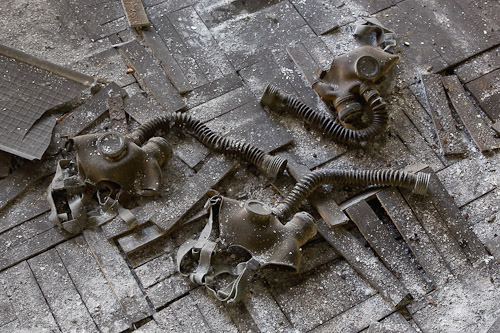
Children’s gas masks, the silver filter elements removed by looters. They had ben issued according to soviet policy in case of nuclear attack from the West. Photo © Quintin Lake
When reactor number four at the Chernobyl Nuclear Power Plant exploded in 1986 the result was the worst nuclear accident in history. Large areas of Ukraine, Belarus, and Russia were severely contaminated, requiring the evacuation and resettlement of over 336,000 people.
Pripyat, 1km from the reactor, was designed as an exemplar of Soviet planning for the 50,000 people who worked at the power plant. A funfair, with bumper cars and Ferris wheel, was due to open two days after the reactor exploded.
These photographs, inspired by Robert Polidori’s earlier images of Chernobyl, were shot in 2007 over 5 hours, apparently the safe period of exposure. Although a Geiger counter was carried in case of localised high emissions, certain areas of vegetation which attract a higher concentration of radiation were avoided.
The physical devastation stems from looting and gradual building collapse, not from the explosion. Over the last ten years people have intruded regularly into the military exclusion zone, stealing everything from irradiated toilet seats to the marble cladding from hotel walls. Photographs of the town capture a memory of three traumas: the invisible radiation, the visible looting and the gradual collapse of a ghost town.
Now with the nuclear disaster at Fukushima Reactor, Japan as a result of the 2011 Tōhoku earth quake and tsunami these images of Chernobyl have a renewed poignancy.
Selected images from this series been exhibited at the Crane Kalman Gallery in Brighton, the Architectural Association in London, the Royal West of England Academy Autumn Show in Bristol and the Host Gallery in London. Images from the series are also published in my book Drawing Parallels: Architecture Observed
BUY PRINTS / LICENSE IMAGES of Pripyat and the Chernobyl Nuclear Disaster here >>

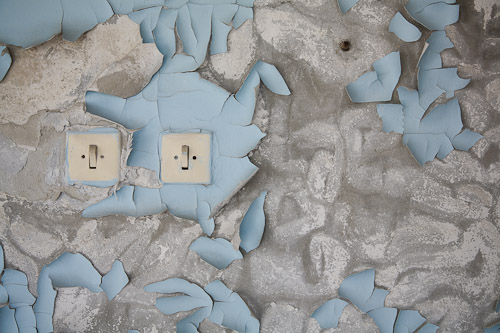
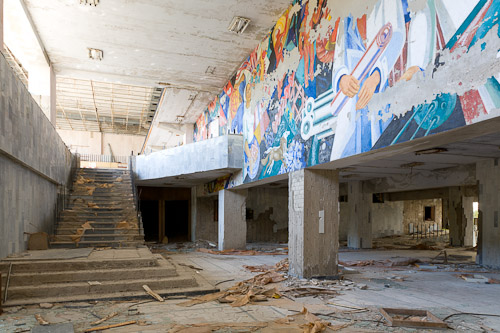

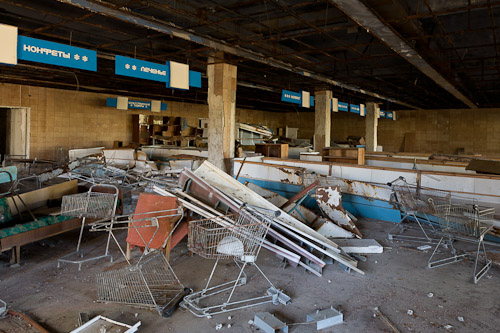
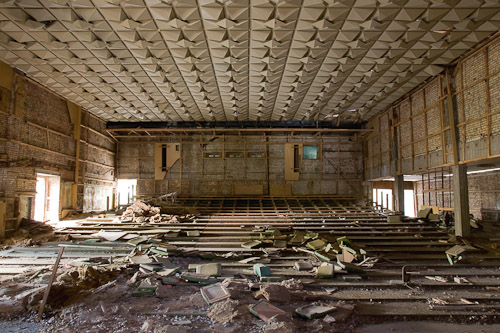
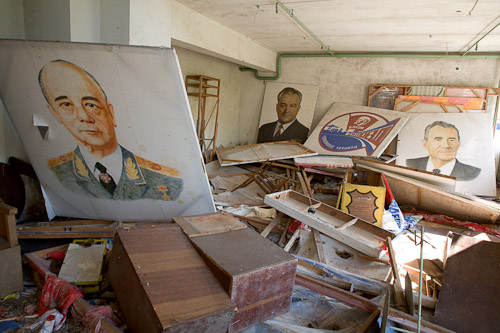

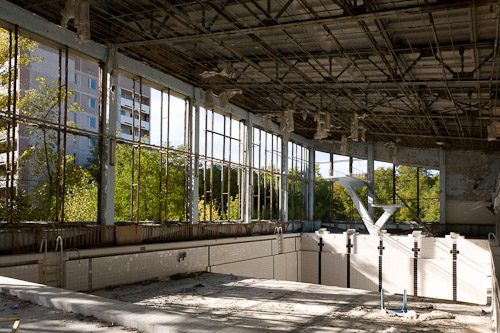


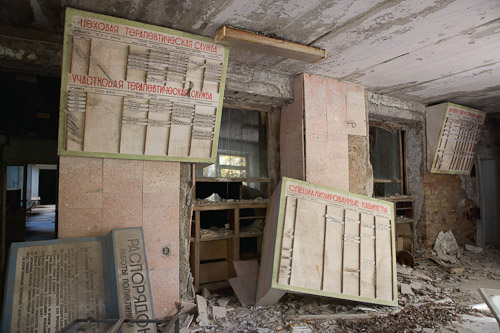

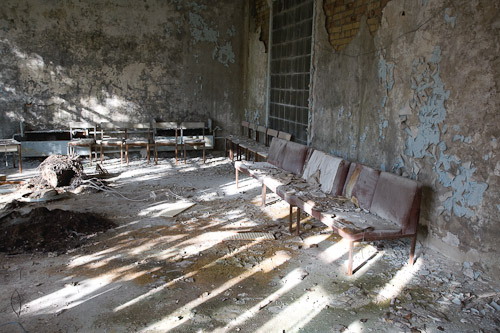




[…] The exhibition will feature eleven of my photographs fom the series “Pripyat: 21 years after Chernobyl” see more […]
A terrible disaster and may not recur. Just want to know What is your source for this information? I am very interested to know where it came from….
Which information specifically?
[…] by filmmaker Chris Morris; as well as an immersive display of projected stills from the collection Pripyat: 21 Years After Chernobyl by architectural photographer Quintin Lake, documenting both the initial aftermath of the nuclear […]
[…] = ''; } Health effects of Radiation Exposure · 21st Century Health 2011 Per. 1Chernobyl Nuclear Disaster: 21 Years After in Photos var topsy_style = 'big'; var topsy_nick = ''; var topsy_order = 'count,badge,retweet'; var […]
IT’S NECESSARY EMBARGO ANTI-RUSSIAN NUCLEAR DESASTER…MOSKOW AND PREZIDENTS GORBACEOV, ELTAN, PUTIN, MEDVEDEEV OCULTED THIS NUCLEAR DESASTER ”NUMBER 6 IN NUCLEAR SCALE EVENTS”-LETHAL…5.000.000 INNOCENTS EUROPEAN VICTIMS DIAGNOZES CANCER EXPOSURE OF NUCLEAR RADIATION. RUSSIA MUST RESPONSABILIZED .